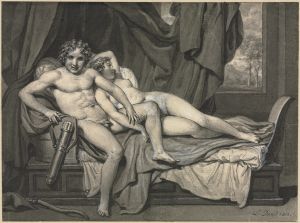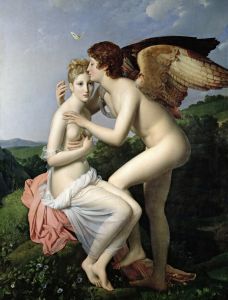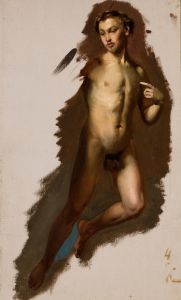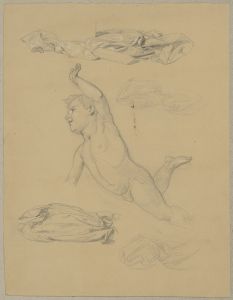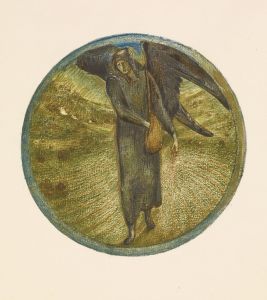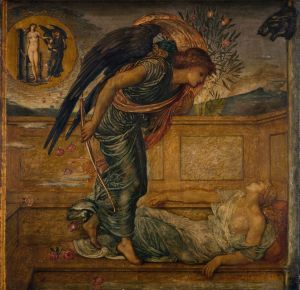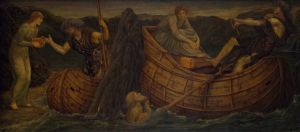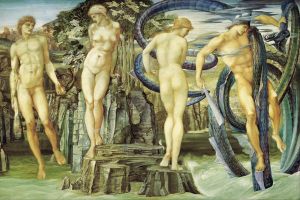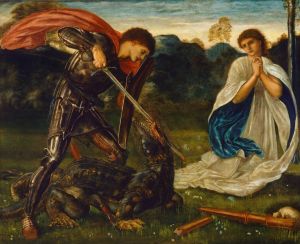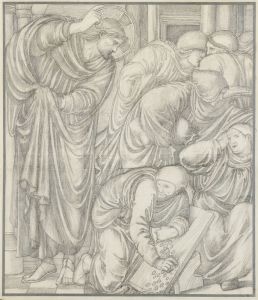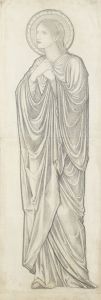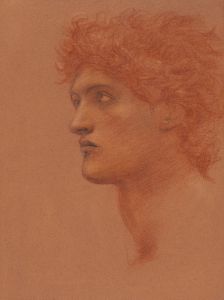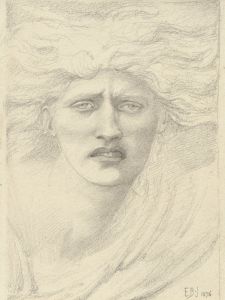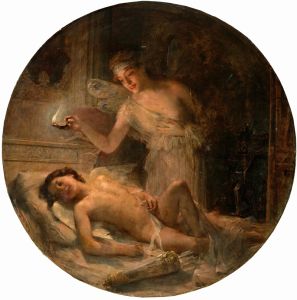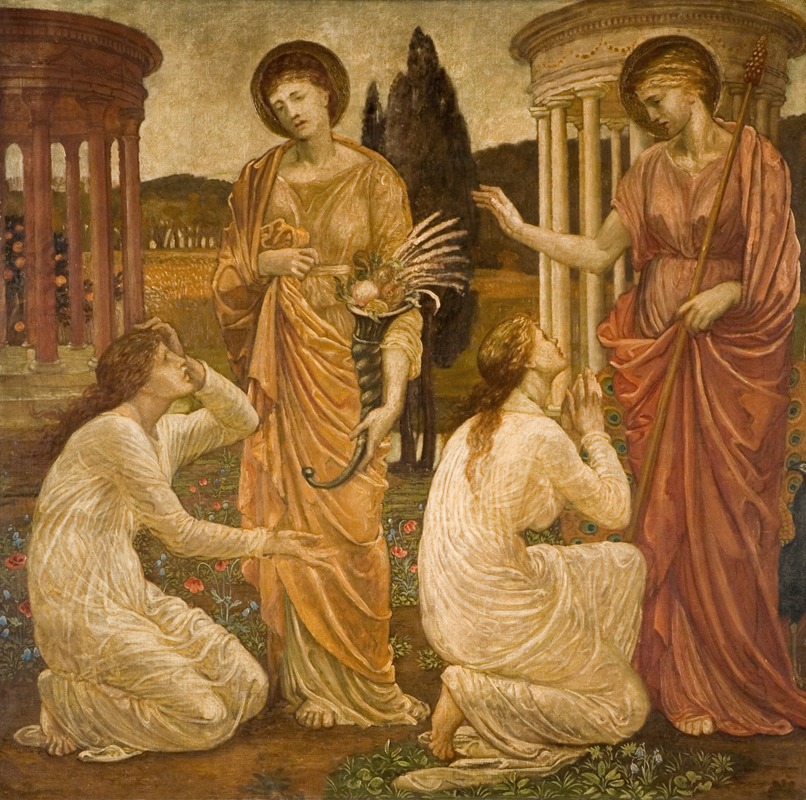
Psyche at the Shrines of Juno and Ceres
A hand-painted replica of Sir Edward Coley Burne-Jones’s masterpiece Psyche at the Shrines of Juno and Ceres, meticulously crafted by professional artists to capture the true essence of the original. Each piece is created with museum-quality canvas and rare mineral pigments, carefully painted by experienced artists with delicate brushstrokes and rich, layered colors to perfectly recreate the texture of the original artwork. Unlike machine-printed reproductions, this hand-painted version brings the painting to life, infused with the artist’s emotions and skill in every stroke. Whether for personal collection or home decoration, it instantly elevates the artistic atmosphere of any space.
"Psyche at the Shrines of Juno and Ceres" is a painting by the British artist Sir Edward Coley Burne-Jones, a prominent figure in the Pre-Raphaelite Brotherhood and the later Aesthetic Movement. The painting was created in 1878 and is part of a series of works that depict the mythological story of Psyche, a narrative that originates from the ancient Roman novel "Metamorphoses" or "The Golden Ass" by Apuleius.
The painting illustrates a moment from the tale where Psyche, in her quest to reunite with her lover Cupid, seeks the aid of the goddesses Juno and Ceres. In the myth, Psyche is subjected to a series of trials by Venus, the mother of Cupid, who is jealous of Psyche's beauty. The scene captures Psyche in a moment of supplication, appealing to the goddesses for assistance.
Burne-Jones's depiction is characterized by his signature style, which includes elongated figures, intricate details, and a dreamlike quality. The artist's use of color and composition reflects his deep interest in medieval art and the influence of the Italian Renaissance. The painting is notable for its delicate rendering of the figures and the serene, almost ethereal atmosphere that Burne-Jones creates.
The figures of Juno and Ceres are depicted with classical grace, embodying the dignity and authority of the goddesses. Juno, the queen of the gods, is often associated with marriage and childbirth, while Ceres, the goddess of agriculture, represents fertility and the nurturing aspects of nature. In the painting, their divine presence is contrasted with the mortal vulnerability of Psyche, emphasizing the theme of divine intervention in human affairs.
"Psyche at the Shrines of Juno and Ceres" is part of a larger body of work by Burne-Jones that explores classical mythology and medieval romance. His fascination with these themes is evident in the meticulous attention to detail and the symbolic elements that pervade his work. The painting is also a testament to Burne-Jones's collaboration with other members of the Pre-Raphaelite Brotherhood, particularly his close association with William Morris, with whom he shared a commitment to the revival of craftsmanship and the decorative arts.
The painting is housed in the collection of the Birmingham Museum and Art Gallery in the United Kingdom. It remains an important example of Burne-Jones's contribution to the Pre-Raphaelite movement and his enduring influence on the development of British art in the late 19th century.
In summary, "Psyche at the Shrines of Juno and Ceres" by Sir Edward Coley Burne-Jones is a significant work that captures the artist's fascination with mythological themes and his distinctive artistic style. The painting's intricate details, classical references, and ethereal quality make it a notable example of Burne-Jones's oeuvre and his role in the broader context of the Pre-Raphaelite and Aesthetic movements.





